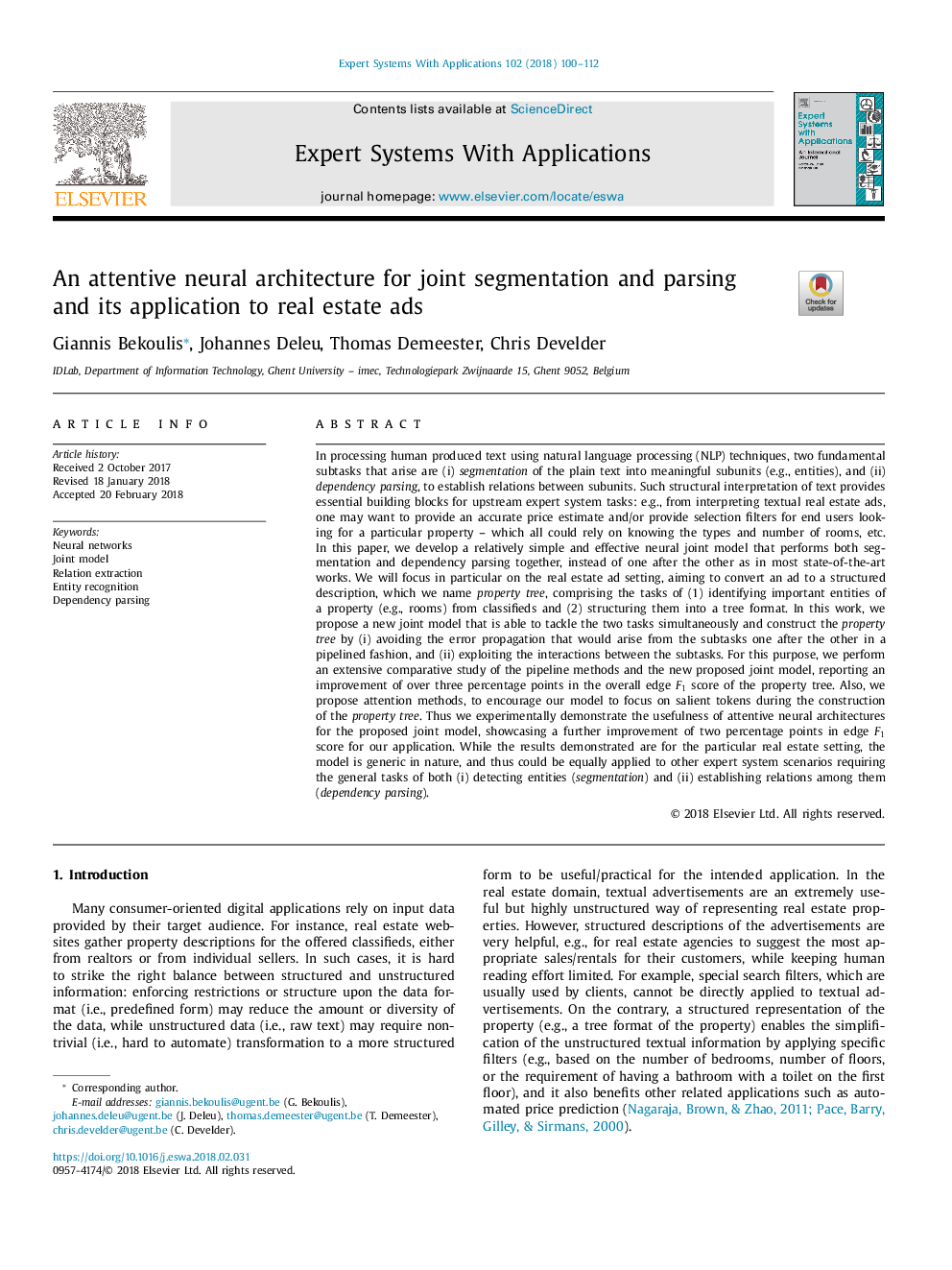| کد مقاله | کد نشریه | سال انتشار | مقاله انگلیسی | نسخه تمام متن |
|---|---|---|---|---|
| 6855056 | 1437604 | 2018 | 13 صفحه PDF | دانلود رایگان |
عنوان انگلیسی مقاله ISI
An attentive neural architecture for joint segmentation and parsing and its application to real estate ads
ترجمه فارسی عنوان
یک معماری عصبی توجه برای تقسیم بندی و تجزیه مشترک و کاربرد آن در تبلیغات املاک و مستغلات
دانلود مقاله + سفارش ترجمه
دانلود مقاله ISI انگلیسی
رایگان برای ایرانیان
کلمات کلیدی
شبکه های عصبی، مدل مشترک، استخراج رابطه، شناسایی شخص، تجزیه وابستگی،
موضوعات مرتبط
مهندسی و علوم پایه
مهندسی کامپیوتر
هوش مصنوعی
چکیده انگلیسی
In processing human produced text using natural language processing (NLP) techniques, two fundamental subtasks that arise are (i) segmentation of the plain text into meaningful subunits (e.g., entities), and (ii) dependency parsing, to establish relations between subunits. Such structural interpretation of text provides essential building blocks for upstream expert system tasks: e.g., from interpreting textual real estate ads, one may want to provide an accurate price estimate and/or provide selection filters for end users looking for a particular property - which all could rely on knowing the types and number of rooms, etc. In this paper, we develop a relatively simple and effective neural joint model that performs both segmentation and dependency parsing together, instead of one after the other as in most state-of-the-art works. We will focus in particular on the real estate ad setting, aiming to convert an ad to a structured description, which we name property tree, comprising the tasks of (1) identifying important entities of a property (e.g., rooms) from classifieds and (2) structuring them into a tree format. In this work, we propose a new joint model that is able to tackle the two tasks simultaneously and construct the property tree by (i) avoiding the error propagation that would arise from the subtasks one after the other in a pipelined fashion, and (ii) exploiting the interactions between the subtasks. For this purpose, we perform an extensive comparative study of the pipeline methods and the new proposed joint model, reporting an improvement of over three percentage points in the overall edge F1 score of the property tree. Also, we propose attention methods, to encourage our model to focus on salient tokens during the construction of the property tree. Thus we experimentally demonstrate the usefulness of attentive neural architectures for the proposed joint model, showcasing a further improvement of two percentage points in edge F1 score for our application. While the results demonstrated are for the particular real estate setting, the model is generic in nature, and thus could be equally applied to other expert system scenarios requiring the general tasks of both (i) detecting entities (segmentation) and (ii) establishing relations among them (dependency parsing).
ناشر
Database: Elsevier - ScienceDirect (ساینس دایرکت)
Journal: Expert Systems with Applications - Volume 102, 15 July 2018, Pages 100-112
Journal: Expert Systems with Applications - Volume 102, 15 July 2018, Pages 100-112
نویسندگان
Giannis Bekoulis, Johannes Deleu, Thomas Demeester, Chris Develder,
